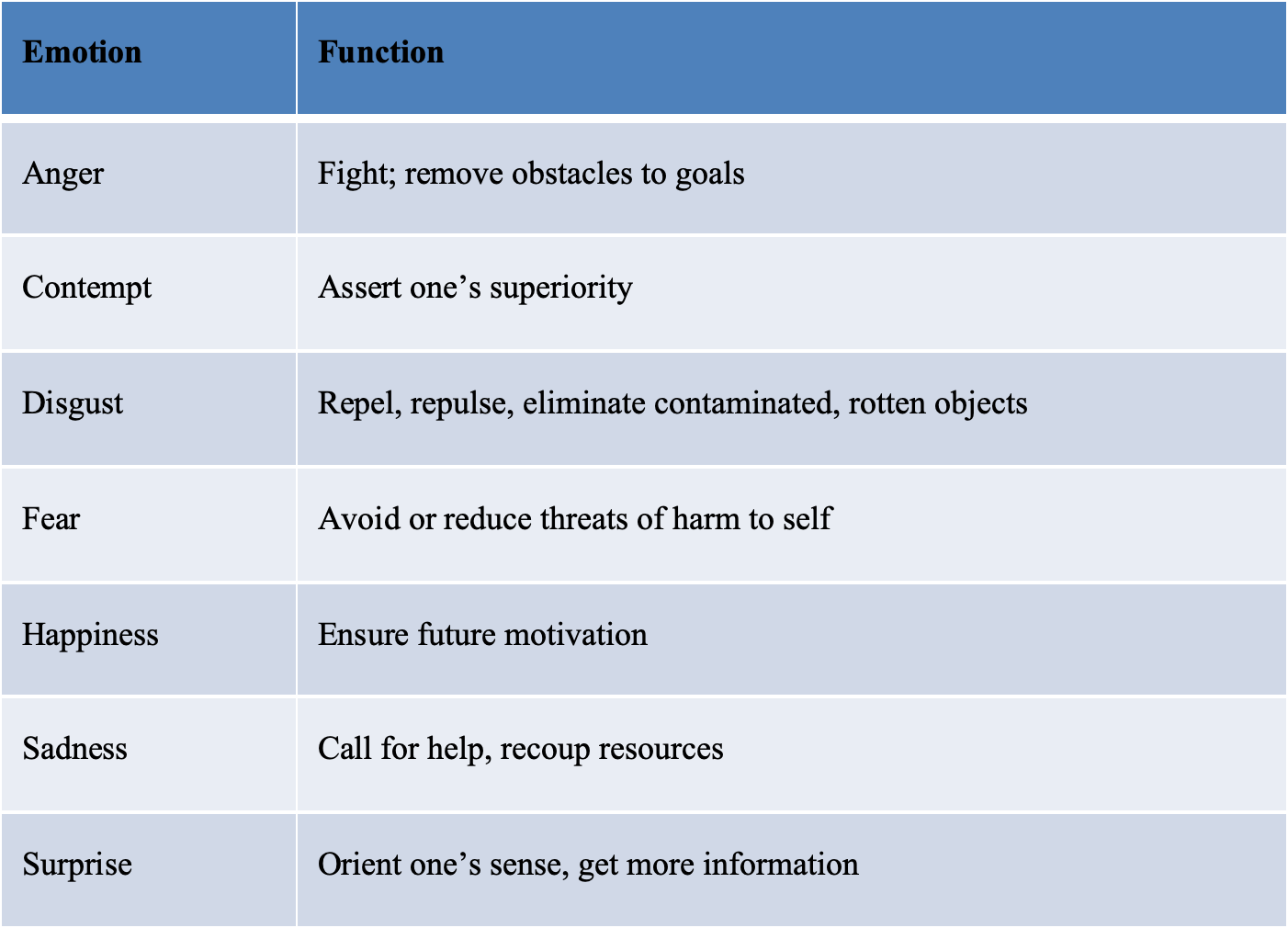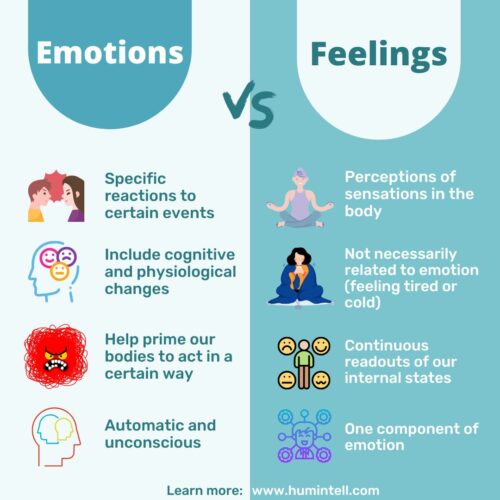Share this Image On Your Site
Differences Between Feelings and Emotions
Emotions and feelings are often confused with one another, but how do they differ?
What are Feelings?
Feelings refer to the perceptions of sensations that are felt in the body. There are many processes that take occur in our bodies that can create sensations. Our perceptions of those sensations constitute what we know of as feelings.
Because there are processes that are going on in our bodies all the time, we can perceive those sensations all the time. It is important to note that there are large individual differences among people on how perceptive they are to those sensations. Some people are very perceptive whereas some people are not.
Feelings can be related to emotions. For example, we can have angry feelings and sad feelings. However, we can also feel cold, feel hot, feel tired, and feel hungry.
What are Emotions?
Emotions are a special class of mental phenomenon where they are reactions to events that have special meaning to us.
Emotions are reactions to meaningful events and emotional reactions include cognitive and physiological changes. These changes occur in our thinking and perceptions as well as in our physiology. All of which help prime our bodies to act in a certain way.
Because these changes involve cognition and physiology, they also creation sensations in us that we can perceive. Since we’re perceiving these sensations all the time, we also have feelings when we’re emotional.
In fact, we can have unique and strong feelings when we’re having an emotion. Thus, many people equate feelings with emotions. In reality, feelings are one component of emotion (along with others) and feelings go on all the time.
You can have non-emotional feelings and they generally are continuous readouts of our internal states. Emotions are specific reactions to certain events that include feelings.
What’s the link between emotions and critical thinking?
Why do we have emotions?
Emotions help us react in some situations with minimal conscious awareness. They help us freeze or flee when there’s an immediate danger, to fight when there’s an obstacle to our goals, or to repel spoiled, rotten, or contaminated things, like spoiled milk, before we ingest them.
Thank god we don’t go through such time consuming, risk-benefit calculations for many life or death events and situations – those that have implications for our health or safety.
Those with that system survived and remain here today; those without that system were selected out of existence by nature. We’ve discussed how each of the basic emotions are triggered by a universal, underlying psychological theme. In the very same way, each of the basic emotions have a unique function, that is, each helps us do something fairly specific.
All of these aid us ultimately in our survival. Thus, getting a handle on the function of each of the basic emotions gives us an idea of why we have each of these emotions in the first place, and what roles they played in getting us here.
Here’s a brief list of the functions of each of the seven basic emotions that are universally expressed:

For more on how emotions help achieve these functions, read this past blog post!
How many emotions are there?
One of the biggest misunderstandings about the 7 universal facial expressions of emotion is that people think that means we have only seven emotions. Nothing could be further from the truth.
Yes, facial expressions of anger, contempt, disgust, fear, happiness, sadness and surprise are universally recognized and expressed. But humans have many other types of emotions as well. These include pride, shame, guilt, embarrassment, triumph, worry, hate, love, jealousy – the list of emotions goes on and on.
This poses a dilemma. On one hand, decades of science have demonstrated that there’s a special category of emotions known as basic emotions.
As we have discussed previously, different scholars classify different emotions into their list of what’s “basic.” We use universal, observable, nonverbal signals in the face as our criterion for classifying emotions as basic, which is why we believe there are 7 basic emotions.
Other scholars have other approaches. Basic emotions are not necessarily better; they’re just different. On the other hand, a quick search of emotion words will reveal that there are hundreds of emotion-related words in English. And this is true in all other languages as well. We can relate to all those emotions lists; they’re all important to our everyday social lives.
To learn how we can reconcile this dilemma, read this past blog post!
